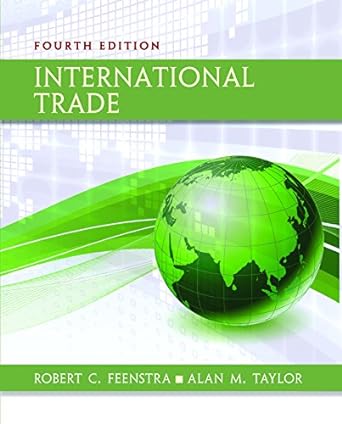Our derivation of the gravity equation from the monopolistic competition model used the following logic: i. Each
Question:
Our derivation of the gravity equation from the monopolistic competition model used the following logic:
i. Each country produces many products.
ii. Each country demands all of the products that every other country produces.
iii. Thus, large countries demand more imports from other countries.
The gravity equation relationship does not hold in the Heckscher–Ohlin model.
Explain how the logic of the gravity equation breaks down in the Heckscher–Ohlin model; that is, which of the statements just listed is no longer true in the Heckscher–
Ohlin model?
The United States, Japan, and China are among the world’s largest producers. To answer the following questions, assume that their markets are monopolistically competitive, and use the gravity equation with B = 93 and n = 1.25.
GDP in 2015 ($ billions) Distance from the United States (miles)
China 11,385 7,245 Japan 4,116 6,314 United States 17,968 —
a. Using the gravity equation, compare the expected level of trade between the United States and Japan and between the United States and China.
b. The distance between Beijing and Tokyo is 1,302 miles. Would you expect more trade between China and Japan or between China and the United States? Explain what variable (i.e., country size or distance) drives your result.LO.1
Step by Step Answer:






